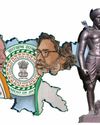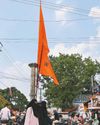
THE television set plays the news on mute at a microfinance executive’s home in Noida. A prime-time panel of experts is having a spirited debate about an exit strategy— how to ease coronavirus restrictions, find a way out of the pandemic, and revive the battered economy. The executive watches silently, without blinking, eyes glued to the ticker scroll running at the bottom of the screen. The branch manager of a microfinance company and his field officer were assaulted and arrested in Sarangarh district of Chhattisgarh for breaching stay-at-home orders. They were trying to recommence field operations of lending and collection of dues. Another such assault was reported from West Bengal. At the heart of any revival plan is the nation’s microfinance market, the largest in the world, catering to more than 120 million homes that have no access to financial services. Indian micro, small and medium enterprises (MSMEs) and the farm sector are the biggest beneficiaries of the microfinance institutions (MFI). And these sectors have clearly suffered a one-two punch and cannot afford any missteps. But instructions from the Centre and states to let MFIs resume limited operations aren’t clearly percolating down to local administrations. The Chhattisgarh and Bengal cases are grim reminders.
As the uncertainty over the lockdown extending beyond May 3, raising fears of more wage, job and business losses, the RBI recently offered a ray of hope with its second tranche of liquidity and regulatory measures. The package offers a special refinancing facility of Rs 50,000 crore to NABARD, SIDBI and NHB. This raised optimism for businesses and agriculturists seeking funds. But will that be enough for thousands of MSMEs, local businesses and the agriculture sector to restart operations after shuttering their doors for more than 40 days?
This story is from the {{IssueName}} edition of {{MagazineName}}.
Start your 7-day Magzter GOLD free trial to access thousands of curated premium stories, and 9,000+ magazines and newspapers.
Already a subscriber ? Sign In
This story is from the {{IssueName}} edition of {{MagazineName}}.
Start your 7-day Magzter GOLD free trial to access thousands of curated premium stories, and 9,000+ magazines and newspapers.
Already a subscriber? Sign In

Trump's White House 'Waapsi'
Donald Trump's victory in the US presidential election may very well mean an end to democracy in the near future

IMT Ghaziabad hosted its Annual Convocation Ceremony for the Class of 2024
Shri Suresh Narayanan, Chairman Managing Director of Nestlé India Limited, congratulated and motivated graduates at IMT Ghaziabad's Convocation 2024

Identity and 'Infiltrators'
The Jharkhand Assembly election has emerged as a high-stakes political contest, with the battle for power intensifying between key players in the state.

Beyond Deadlines
Bibek Debroy could engage with even those who were not aligned with his politics or economics

Portraying Absence
Exhibits at a group art show in Kolkata examine existence in the absence

Of Rivers, Jungles and Mountains
In Adivasi poetry, everything breathes, everything is alive and nothing is inferior to humans

Hemant Versus Himanta
Himanta Biswa Sarma brings his hate bandwagon to Jharkhand to rattle Hemant Soren’s tribal identity politics

A Smouldering Wasteland
As Jharkhand goes to the polls, people living in and around Jharia coalfield have just one request for the administration—a life free from smoke, fear and danger for their children

Search for a Narrative
By demanding a separate Sarna Code for the tribals, Hemant Soren has offered the larger issue of tribal identity before the voters

The Historic Bonhomie
While the BJP Is trying to invoke the trope of Bangladeshi infiltrators”, the ground reality paints a different picture pertaining to the historical significance of Muslim-Adivasi camaraderie